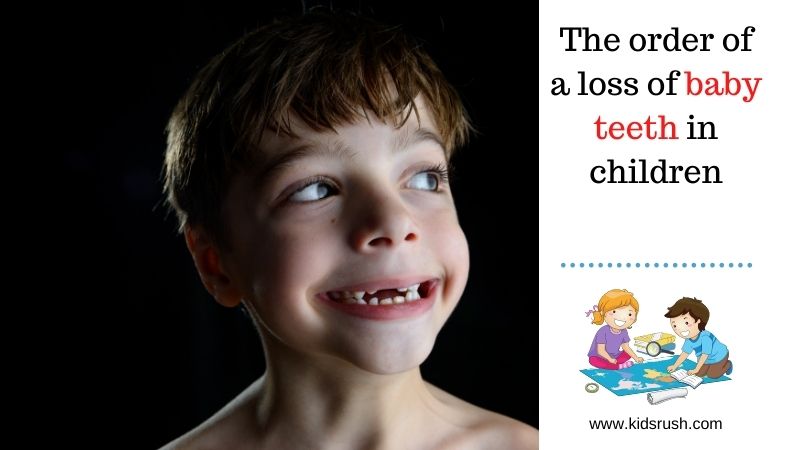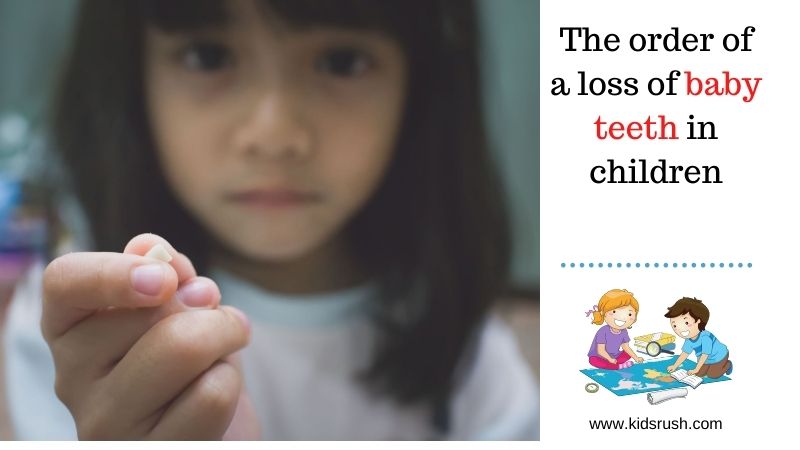The order of a loss of baby teeth in children
The loss of the first teeth or baby teeth usually begins around the age of five or six, when a long process of tooth loss and renewal begins until the final teeth are achieved. As the permanent teeth grow and begin to emerge, they push the previous ones, causing the latter to come off.
The time of exfoliation or loss of each milk tooth, which is 20 pieces in total, is approximate, since there may be variations due to genetics or other reasons. The lower teeth, which were probably the first to appear, are also often the first to fall out.
Read Also: What to do if the child has a toothache?
How do permanent teeth come out in children?

Lower. The lower incisors are born on the inside of the gum, behind the baby teeth, pushing them out. In children’s mouths, the peaks of the new incisors can be seen behind the milk incisors, which have not yet fallen.
Superiors. They are born in front of the gum, pushing the baby teeth in before their fall. The upper central incisors come out around 6 or 7 years.
Six-year-old molars. This first definitive molar will come out behind the last baby molars. These molars do not replace any other, but occupy the free space behind the second molars, which have not yet fallen, and live with them for a few years. The bottom ones appear first and then the top ones. [1]
What to do when a tooth starts to move?
The recommendation is not to force it, since it can take a long time since it begins to move until it falls out and the movements can damage the final tooth or the gum. It is important to avoid touching it with the tongue or the other teeth to cause it to detach.
However, when it is very loose and moves so much that it bothers the child to speak or eat, we can allow him to remove it himself. If when moving it, it does not hurt, it is because it is well loose.
Why do baby teeth fall out
The loss of milk teeth occurs when the permanent tooth, which is under the gum, begins to press on the milk tooth and loosen it little by little. The teeth fall out leaving a gap where the new tooth appears. The definitive teeth stand out in the gum, wearing down the roots of the milk teeth, which will begin to move until they fall.
How permanent teeth are positioned
The permanent teeth that are coming out are larger than those of milk so that the separation that these had between them disappears when they fall. New teeth, being larger than those of milk, are not always well positioned or do not have enough space to be placed correctly and come out “where they can”. In general, during the change of teeth, some teeth may come out crooked, but when the maxillofacial bone develops and is complete, they align a little on their own.
However, when tooth alignment is not good, the definitive tooth erupts next to the milk tooth and not under it, without wearing down its root. Then, the two will appear in the mouth, forming a double row of teeth. This is more frequent in the incisors and it is advisable to inform the dentist to anticipate the fall of the milk tooth since when the final tooth finds its hole, it will move to occupy the empty place.
At what age do baby teeth fall and are replaced

kidsrush.com has developed a scheme that can serve as a guide for parents to know when primary or primary teeth tend to fall out and when they will be replaced by larger and stronger teeth, known as permanent or permanent teeth. It will also be the time to remember the story of the Tooth Fairy so that the children feel excited about the loss of a tooth and the birth of another.
| Upper teeth | Down teeths |
|---|---|
| 1- Central incisor | 1- Central incisor |
| Fall: 7 and a half years | Fall: 6 years |
| Exit: 7 - 8 years | Exit: 6 - 7 years |
| 2- Lateral incisor | 2- Lateral incisor |
| Fall: 8 years | Fall: 7 years |
| Exit: 8 - 9 years | Exit: 7 - 8 years |
| 3- Canine | 3- Canine |
| Fall: 11 and a half years | Fall: 9 and a half years |
| Exit: 11 - 12 years | Exit: 9 - 10 years |
| 4- First molar | 4- First molar |
| Fall: 10 and a half years | Fall: 10 years |
| Exit: 10 -11 years | Warmth: 10 - 12 years |
| 5- Second molar | 5- Second molar |
| Fall: 10 and a half years | Fall: 11 years |
| Exit: 12 - 13 years | Exit: 11 - 13 years |
| 6- Third molar | 6- Third molar |
| Exit: 17 - 21 years | Exit: 17 - 21 years |
| 7- First premolar | 7- First premolar |
| Exit: 10 - 12 years | Exit: 10 - 12 years |
| 8- Second premolar | 8- Second premolar |
| Exit: 10 - 12 years | Exit: 11 - 12 years |
